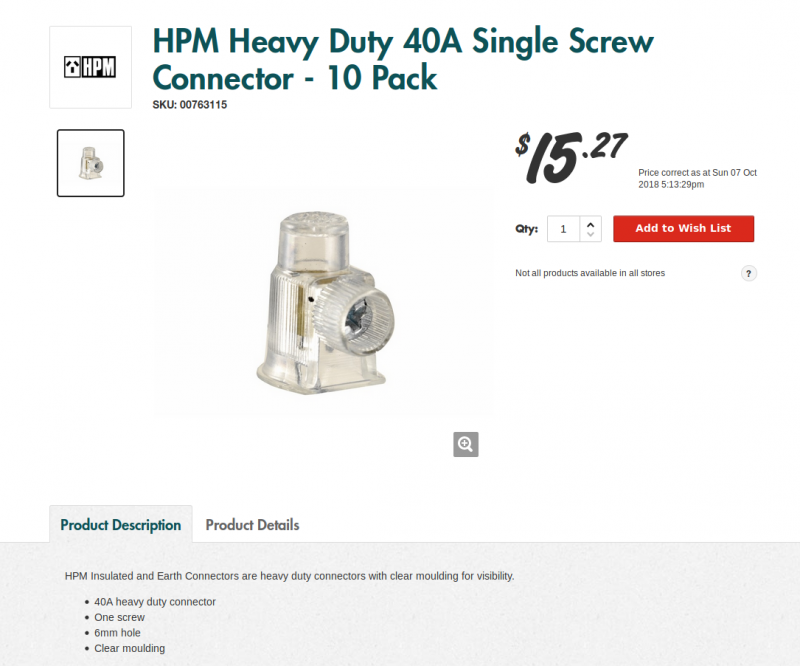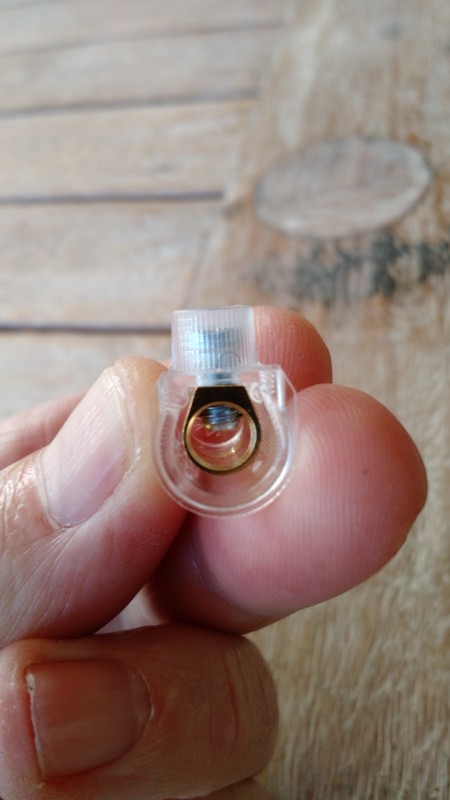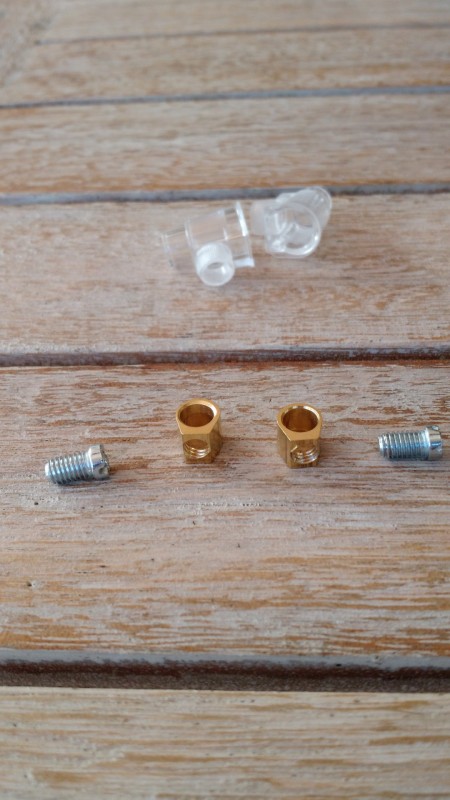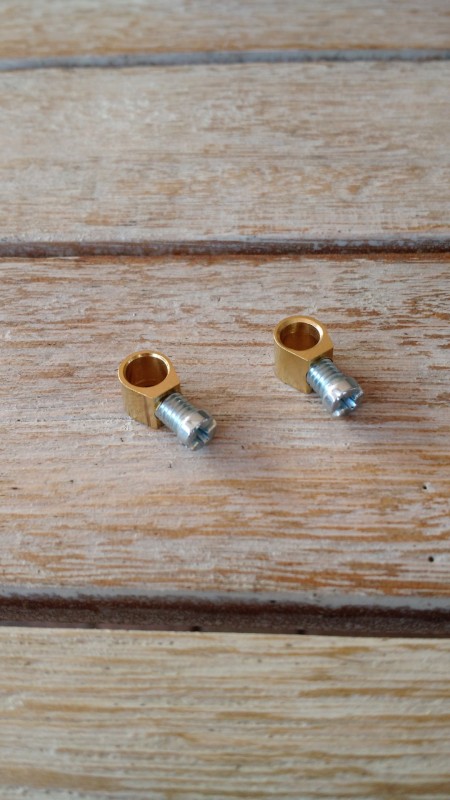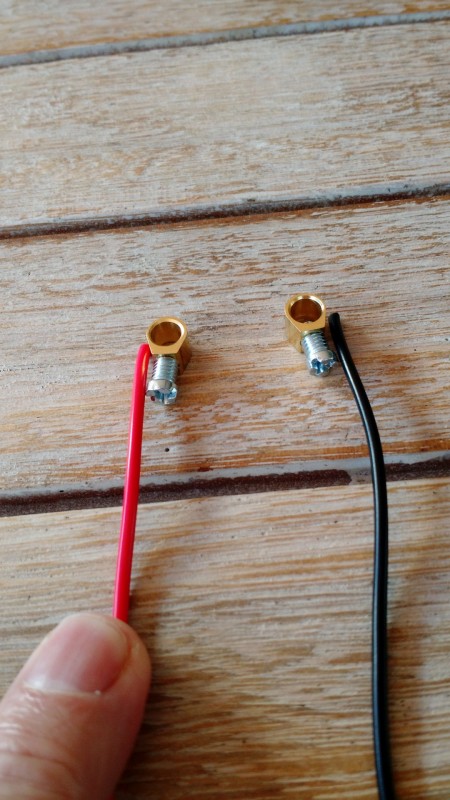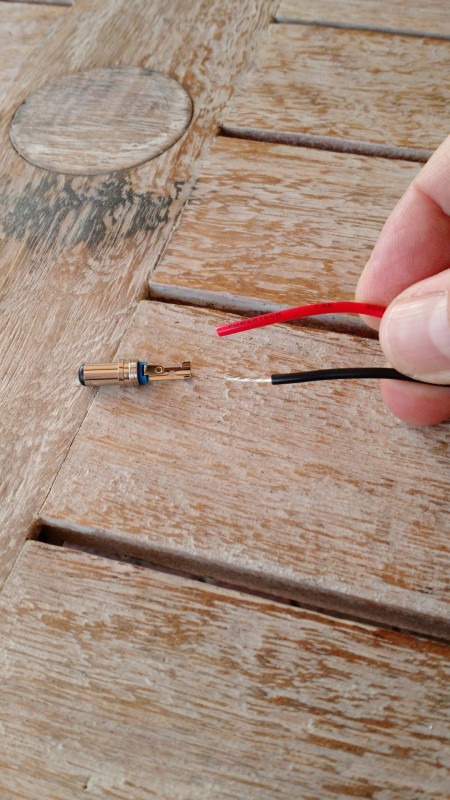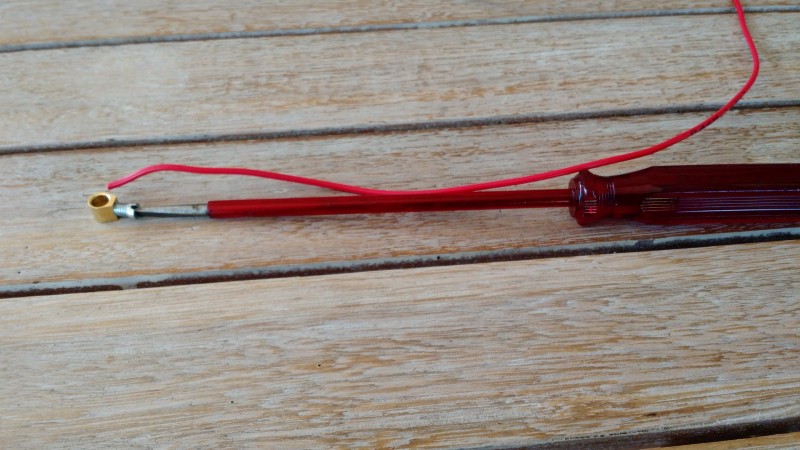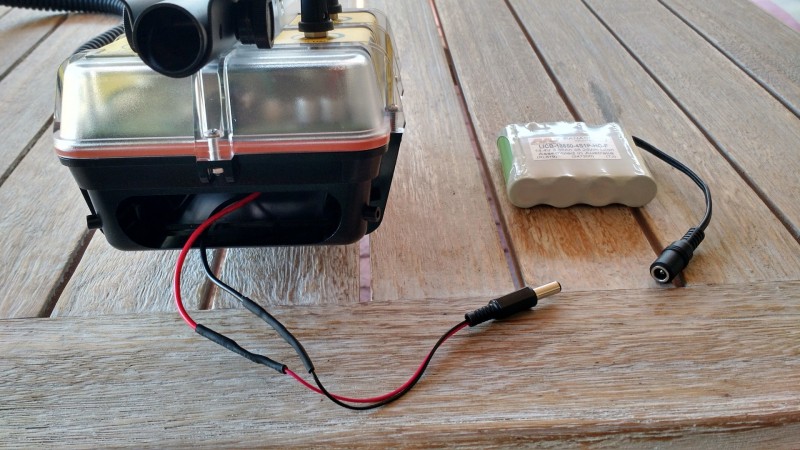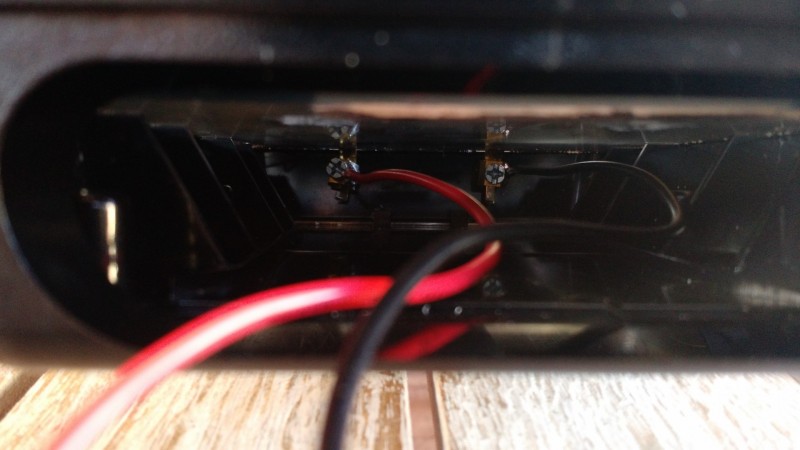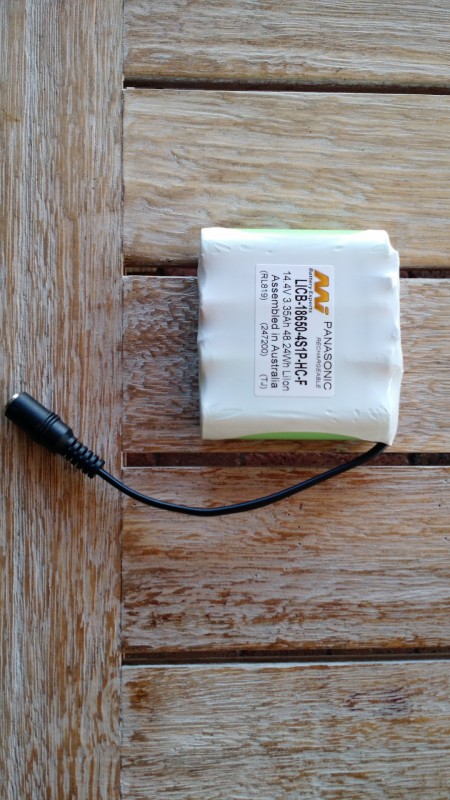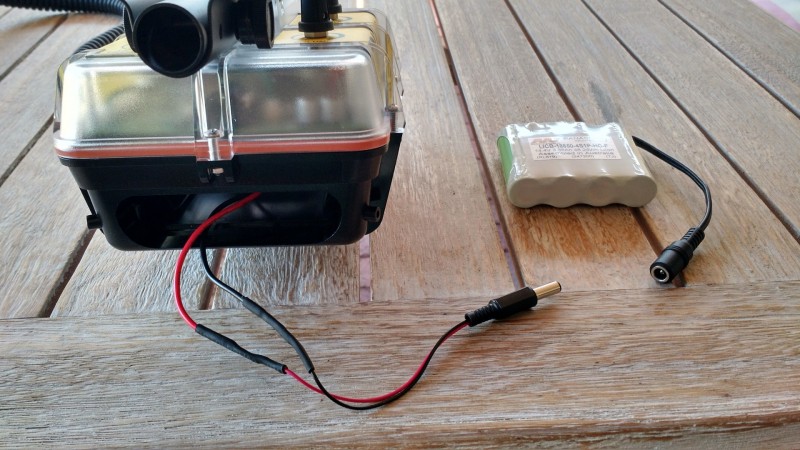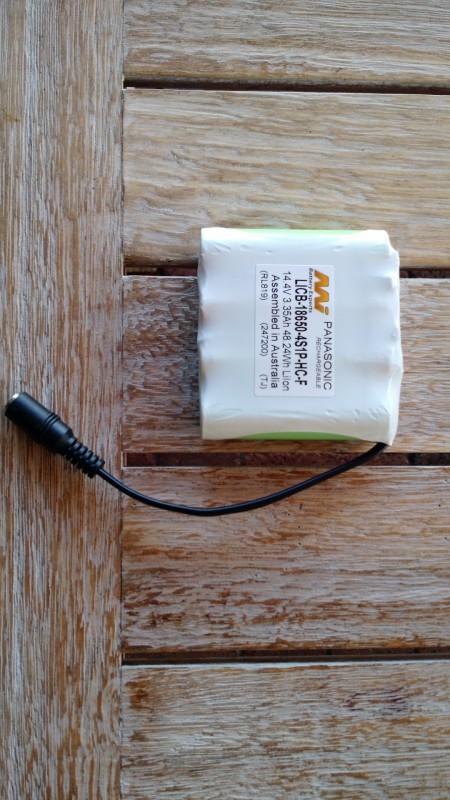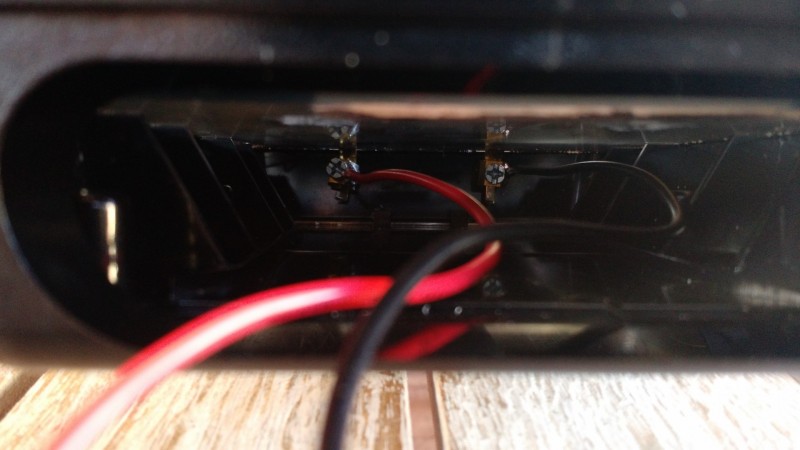-
Posts
956 -
Joined
-
Last visited
Content Type
Forums
Detector Prospector Home
Detector Database
Downloads
Everything posted by Tony
-
Simple 14.8v Battery Pack For TDI Beach Hunter
Tony replied to Tony's topic in White's Metal Detectors
The pack came with a dedicated charger.......simple and cheap around $20. -
Tom, I have a brand new (3 spoke centre mount) 10" coil hand built by Eric Foster that I would like to have installed onto my TDI Beach Hunter. Is this something I could have White's do for me to maintain warranty? If so, could you PM me on cost and anything else I should consider. I find the 12" Dual Field just a bit too big for water hunting. Thanks for any help, Tony
-
Yep, it's about 400 miles East of Perth to get where you want to go. I go from late April to late October with the middle months nice and cool. My next trip will be for about 3 weeks....probably during May / June / July. There's a big piece out there somewhere with my name on it........just need to sweep over it.....simple really. Forget the summer months....the flies and heat are unbearable even with plenty of water. Tony
-
TDI Beach Hunter Deep Big Bling Ring
Tony replied to Gerry in Idaho's topic in White's Metal Detectors
Damn....it's King Neptune himself !!!! Looks like he has downed his Trident in favor of the White's......and I don't blame him one bit. This must be King Neptune when he's not using his TDI BEACH HUNTER....? -
I operate with GB off........better depth. Also no gold "blind spots" when using GB For example, with GB on at the half way setting, my gold ring is only detectable to about 6 inches.....? I run my threshold where it just cuts out but you can still hear something and then turn the volume up.
-
With GB off, all signals are high tone.
-
My beaches are typically very low mineralisation so I run with GB off and get better depth as well as that super smooth threshold that alerts you to the smallest and deepest targets.
-
Okay......I run with GB off so all single tone for me. I think the low/high tone cut-off is also dependant on the GB setting.
-
I think Google Translate hasn't helped here.............not sure what the question is.......sorry.
-
Have " Faith " In The White's TDI Beach Hunter, I Do
Tony replied to Gerry in Idaho's topic in White's Metal Detectors
Nice finds Gerry.......I am loving this machine and it has found me some nice stuff already and deep ! I have discovered that if you get a whisper break in that super smooth threshold and that the target signature is very narrow at the surface....you need to prepare yourself for some digging. I found a stretch of beach that was very low, hardpan, dense crushed shell and limestone......dug some nice gold and green coins but those tear-drop fishing sinkers take some digging at 20" down..........all 28 of them ! ............I wouldn't have it any other way............? Tony PS..........Thanks for looking after me with getting the detector. Still can't get them here yet ! -
Simple 14.8v Battery Pack For TDI Beach Hunter
Tony replied to Tony's topic in White's Metal Detectors
Hello Dale, My 4S battery charges automatically to about the same (16.7v) and absolutely no problems with the detector at all. I keep track of the run time on my pack and swap out after 7 hours. This is assuming a 4S1P pack of about 3250mah. The BMS built into my pack will automatically disengage the battery at around 10v (or 2.5v per cell). I won't let it drop this low in order to maximise the overall life of the batteries better and therefore get many more cycles from the pack. After 7 hours detecting my pack is around the 12v mark (or 3v per cell). Tony -
Simple 14.8v Battery Pack For TDI Beach Hunter
Tony replied to Tony's topic in White's Metal Detectors
Looks good.......just make sure you know which leads are + - (If you ever have to re-connect)as I see both wires are red. Happy hunting, Tony -
Simple 14.8v Battery Pack For TDI Beach Hunter
Tony replied to Tony's topic in White's Metal Detectors
Hello Dale, If using loose cells in a 18650 holder then I would recommend individually protected cells as they will automatically cut out if you run them too low (less than 2.5v usually). I think all 18650 packs (4 x 18650 in series shrink wrapped style like my photo) have an inbuilt BMS (Battery Management System) which does the same job. I won't use unprotected cells either individually or as a pack. I think the "flat" unprotected cells are designed for a BMS to be built into the battery pack as a DIY. The standard 4 x 18650 battery holders have to be trimmed down significantly in order to fit into the detector. It can be done with a bit of work but I much prefer the single battery pack of 4 x 18650 in series, aka, 4S1P. Also, if using loose cells in a battery holder, a button top is needed in order for the + side of the battery to engage the + battery holder contact. So for me personally, an all in one protected 4S1P pack is the way to go with it's own dedicated charger (cheap to buy). I will keep my loose Panasonic button top protected cells and use them in my 3 x 18650 battery holders for when I'm happy to run a lower voltage and depth isn't critical. I hope this helps, Tony. PS...............Awesome detector by the way. -
Simple 14.8v Battery Pack For TDI Beach Hunter
Tony replied to Tony's topic in White's Metal Detectors
Thanks for the file. I might print some up. How is the battery pack secured against the 3D battery connector? Regards, Tony -
Simple 14.8v Battery Pack For TDI Beach Hunter
Tony replied to Tony's topic in White's Metal Detectors
I advise strongly not to re-engineer a protected Lithium Ion battery pack as a short is an easy mistake to make.........it may not end well and if you create a problem with the battery pack inside the detector then goodbye detector....seriously, it will destroy the detector and will leave you a smoking pile of plastic. Please be careful, Tony -
Simple 14.8v Battery Pack For TDI Beach Hunter
Tony replied to Tony's topic in White's Metal Detectors
This is what they are at our large Hardware store; You can but these separately if a 10 pack is too much. In your country they may be called something else? You need the 6mm hole otherwise it will not slide over the battery connector. Tony -
Simple 14.8v Battery Pack For TDI Beach Hunter
Tony replied to Tony's topic in White's Metal Detectors
Thanks Steve......I am up now and had my coffee....? I have taken some sequential photo's which I hope describes the process so here goes; 1. Buy some of these from your hardware store. They are often found in the general electrical section, very cheap. You need to make sure that the round hole is wide enough to pass over the detector's battery contacts. 2. Remove the screws and discard the plastic insulator shell as this is no longer needed because of the lack of space getting to the battery contact points. 3. Re-insert screws just enough so they don't drop out. This can also be done after soldering the wires to the brass terminal. 4. Strip ends of both wires (not shown) and solder to the sides of the brass screw terminals. Lightly rough up where the solder will go. You don't need much solder, just a small blob. Make sure the wires are facing out towards you when you solder them up. I wanted to solder the wires through the bottom holes (for a better mechanical connection) but it took up too much space and the connector wouldn't slide over the battery contacts. The connection on the side is still very strong and this way, the wires come directly out. 5. Solder other leads to a DC connector or whatever mating connector you require for your battery pack. Make sure you know where the +- leads go. I already had a DC plug wired up so I just joined the wires and applied some shrink tube to the joins. Shorting a Lithium battery is scary ! 6. The last bit is a bit tricky. You need to hold the wire (soldered to brass screw terminal) with your finger against the screwdriver and reach down to work the screw terminal's hole over the battery contacts. Tighten the screw firmly and it will secure against the battery contact. You don't need to tighten the screw too hard. This is about the best I can describe the process. So far, the setup works perfectly. Periodically, you can check that the securing screw hasn't loosened off. Tony. -
Simple 14.8v Battery Pack For TDI Beach Hunter
Tony replied to Tony's topic in White's Metal Detectors
I'm not sure I understand your question...... All connections are done through the battery compartment but you need a very long and thin screwdriver to be able to reach down and tighten the screws. There is definitely no need to open up the detector. I hope this has answered your question. I don't understand "screw to neutral" ?? Maybe lost in translation? Tony -
Simple 14.8v Battery Pack For TDI Beach Hunter
Tony replied to Tony's topic in White's Metal Detectors
Just to clarify....the bare wires are soldered directly to the side of the brass screw terminals. The screw terminals have a small hole through them which slide in over the battery contacts and then the screw is tightened to secure the leads. Sliding the screw terminals over the battery contacts is a bit tricky as the contacts are kind of "L" shaped. Select a screw terminal that has a big enough hole to get over the contacts. Tony -
Just thought I'd post this............. I now run a 14.8v pack (4 x 18650 cells in series) which gives me a 7 hour run time. My previous version used loose cells in a holder but I wasn't happy with that. I made up a battery lead that connects directly to the battery compartment contacts with small brass "screw terminal" connectors soldered with 22AWG wire. A bit fiddly to hook up (long and narrow screw driver needed to tighten the two terminal screws) but very secure and + - leads well apart to avoid a short. I may put in place a rubber divider that further separates the +- battery contacts but the screw connectors are quite secure. The battery pack fits in snugly and does not move around at all. I deliberately made the wire lead long enough so the battery can be unplugged with the excess lead bundled inside the battery compartment. Tony
-
So far, the detector has exceeded my expectations. I can't fault anything at all. The performance (sensitivity and stability) is the best I have experienced on any beach detector (VLF or PI). I run a 14.8v pack (4 x 18650 cells in series) which gives me a 7 hour run time. I made up a battery lead that connects directly to the battery compartment contacts with small brass "screw terminal" connectors soldered with 22AWG wire. A bit fiddly to hook up (long and narrow screw driver needed) but very secure and + - leads well apart to avoid a short. Tony PS...I will post this a separate thread.
-
Yep, my TDIBH unboxing took me 11.25 seconds flat.......there's took over 13 minutes....amateurs.....? When I unbox a new detector, family know to give me plenty of elbow space because my 6 foot and 200 pound frame doesn't stop until the box is in several pieces and the user manual is dispatched into some corner.....................I really should video the event someday. Tony
-
I am also looking at the Sanyo 20700's in a 4S1P setup. These are rated at 4250mah and of course you get the 14.8v nominal. I need to check the clearance with the 20mm height and 70mm width but I think it's possible. Have the BMS fitted to the pack as there is now room. More details soon ! Tony
-
8 x 18650 can fit but very difficult with the balancing wires or BMS fitted. I am happy with the 4S1P setup......7 hours run time at the higher voltage. Easy enough to swap out fresh batteries on the beach and away from the water. TDI platform is safe at 16.8v.
-
If you ever want to make and sell some of those 3D end pieces, I'd be interested. Nice work, Tony



